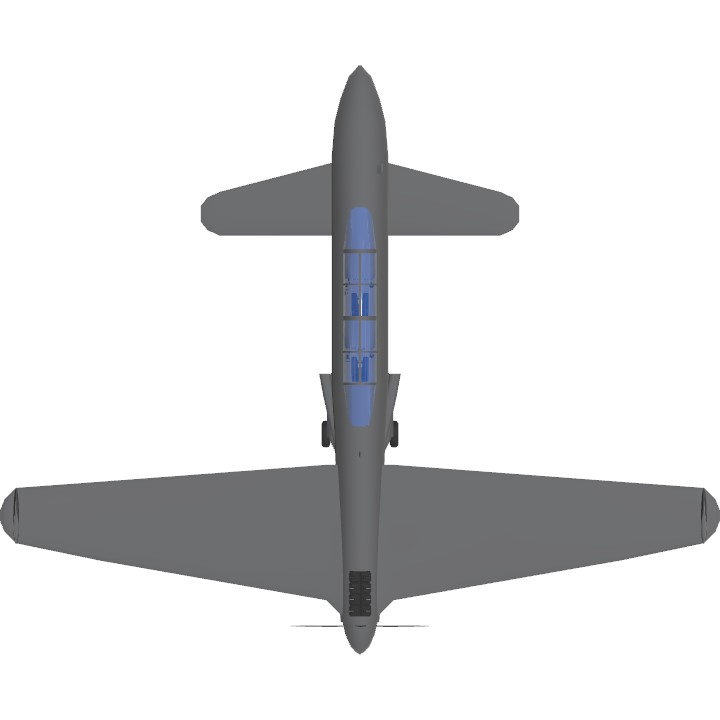Description
The B-52 Txitxarra, originally designed by Bultzatu Aero in 1952 as a two-seat experimental that aircraft eventually became the country's reconnaissance aircraft for the following 10 years
Lore

The Genesis of the B-52 Txitxarra
By 1952, Bultzatu Aereo had gained substantial experience and reputation in aircraft design and production. It was in this year that the company embarked on one of its most ambitious projects: the B-52 Txitxarra. Named after the Basque word for "Grasshopper" the Txitxarra was an experimental pusher propeller plane, a design choice that set it apart from the conventional aircraft of the era.
The B-52 Txitxarra was conceived in the company’s main design hub in Iruña, where a team of engineers worked tirelessly to bring this innovative concept to life. The design process was marked by several key phases:
Conceptualization and Design: The initial idea for a pusher prop plane was proposed by junior designer Haize Zuhasti, who was inspired by the need for improved field of view and better radar perfomance And so the design team focused on the internal equipment of the airplane, designing the fuselage around the large radar mounted on the nose of the aircraft.
Prototyping and Testing: Building the first prototype, dubbed the Txitxarra I, involved meticulous craftsmanship and numerous wind tunnel tests. The primary challenge was achieving stability and control, given the unconventional design. Early test flights revealed issues with propeller turbulence affecting the tailplane, leading to several iterations and modifications.
Refinement and Production: After addressing the initial design challenges, the Txitxarra II prototype emerged, showcasing improved aerodynamics over it's previous iterations and overall better flight performance. This model featured an advanced avionics suite, which eventually led the way for the place it would find as a recon unit.
Deployment and Legacy
The B-52 Txitxarra entered limited production and saw service primarily within the Basque Republic’s air force. Its role as a reconnaissance plane was pivotal during the early Cold War period, providing valuable intelligence and surveillance capabilities. The aircraft’s unique design also caught the eye of the Commune of France, leading to a modest export deal.
However, the B-52 Txitxarra’s legacy extended beyond its operational use. It became a symbol of Basque ingenuity and the collaborative spirit fostered by the third internationale. The lessons learned from its development influenced subsequent aircraft designs by Bultzatu Aereo, cementing the company’s reputation as a pioneer in innovative aeronautical engineering.
In retrospect, the B-52 Txitxarra was more than just an experimental aircraft; it was a testament to the resilience and creativity of the Basque people, reflecting their determination to forge a path of technological independence and excellence in a rapidly changing world.
Controls
AG1 Pilot Canopy
AG2 Co-Pilot Canopy
AG3 "Radar"
AG4 Idonremember
Artwork for the logo done by my beautiful girlfriend
Its surprisingly easy to land even having no flaps
lazy landin gear coz i did not know how to even begin
i know the picture style is way older than 1950s, it looks cool alright
Specifications
General Characteristics
- Created On Windows
- Wingspan 52.3ft (15.9m)
- Length 42.8ft (13.0m)
- Height 14.0ft (4.3m)
- Empty Weight 12,898lbs (5,850kg)
- Loaded Weight 16,787lbs (7,614kg)
Performance
- Horse Power/Weight Ratio 0.089
- Wing Loading 36.9lbs/ft2 (180.2kg/m2)
- Wing Area 454.8ft2 (42.3m2)
- Drag Points 2331
Parts
- Number of Parts 205
- Control Surfaces 6
- Performance Cost 1,045







@SoggedWing , With pleasure .
@Trainzo Merci
Nice Plane .